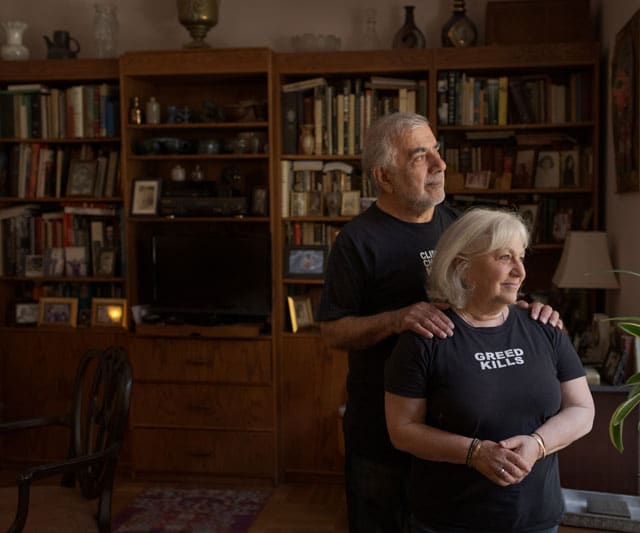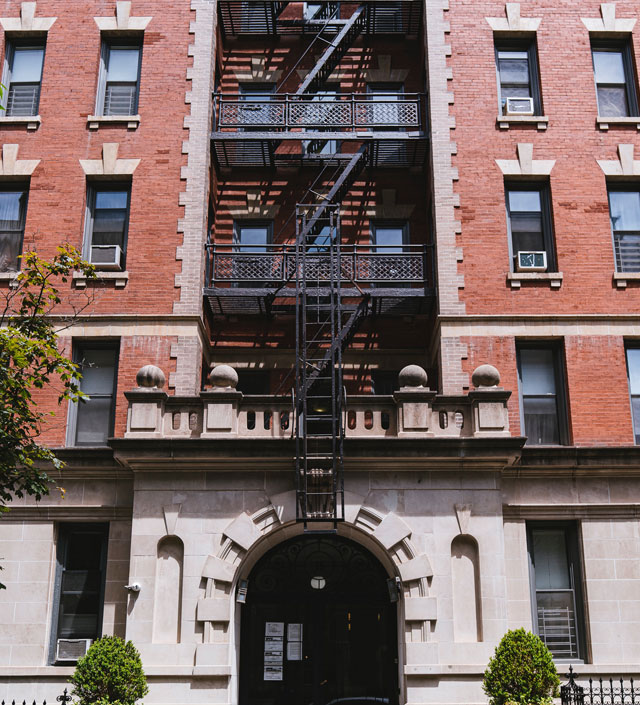For the second consecutive year, a New York City panel that regulates the rents for roughly 1 million rent-stabilized apartments approved Wednesday some of the highest increases in a decade, as inflation and rising expenses for property owners continue to aggravate the city’s affordability problems.
The panel, known as the Rent Guidelines Board, voted 5-4 to raise rents on one-year leases by 3%, and on two-year leases by 2.75% for the first year and 3.2% for the second year.
It would be the second time during the tenure of Mayor Eric Adams — who appoints members to the panel and has expressed sympathies for the difficulties facing landlords — that the panel allowed stabilized rents to increase. Last year, it voted increases of 3.25% one one-year leases and 5% on two-year leases. The increases this year and last year were higher than any since 2013.
Roughly 2 million people — one-quarter of New York City’s total population — live in rent-stabilized apartments, and no other U.S. city has a program as vast. The system has become one of the most important sources of lower-cost housing as the cost-of-living in New York continues to reach new heights, and it has helped retain the city’s middle class.
Several renters across the city — including higher earners, retired people who had lived in their apartments for decades and newcomers — said the incremental rent increases and guaranteed lease renewals that come with rent stabilization have helped them navigate New York City’s chaotic and unforgiving housing market.
Advocates for tenants criticized the back-to-back rent increases as emblematic of landlords’ influence over public policy. Property owners, on the other hand, have said they are increasingly feeling beleaguered and unable to make renting stabilized apartments financially viable.
For some renters, however, the moment symbolized something deeper: how people of modest means are finding it harder and harder to live in New York City. A 2021 city survey found that one-third of New York City tenants spent more than half of their income on rent. For them, increases will force difficult choices about where else to cut back on spending.
“We would eat better,” said Chen Ren Ping, 65, who shares a rent-stabilized apartment in Chinatown he has lived in since 2004. “Our lives would be better.”
Chen said he earns about $794 a month in Social Security payments. But he said his half of the rent for the two-bedroom apartment is $800, so he does repairs around the neighborhood to supplement his income.
Hundreds of renters and activists packed the raucous meeting Wednesday evening at a Hunter College building on the Upper East Side. Board members were drowned out by boos and chants of “rent roll back.”
As in previous years, the two members representing landlords sought higher increases, while the two representing tenants sought a rent freeze or lower increases. Neither side appeared satisfied with the outcome.
“At the end of the day, an unelected board comprised of predominantly non rent-stabilized tenants, who do not interact with or advocate for our communities, will not solve our problems,” said Adán Soltren, a tenant representative on the panel.
Christina Smyth, a landlord representative, likened the rent-stabilization system to “the largest unfunded subsidy in history,” with landlords carrying the burden.
“Government, not private owners, are responsible for providing assistance to renters in need,” she said.
Although they have taken a hard stance against any increases in the past, the two members representing tenants voted in favor of the final numbers. One, Genesis Aquino, said it was the “lowest we were able to secure for tenants.”
Adams said in a statement after the vote that the board had found “the right balance” this year and was protecting tenants as well as “ensuring small property owners have the necessary resources to maintain their buildings.”
As expensive as it is to live in New York, no other U.S. city has a rent regulation system as vast: More than 1 million apartments — half the rental market and almost 30% of all of New York City’s homes — are covered by a system begun in 1969.
The majority of rent-stabilized homes are in buildings built before 1974. For many years, the number dropped, as landlords moved to leave the program and get more income from higher rents.
Since 2017, however, the overall number has grown, according to a tally of units registered with the city and state, particularly as many new units and rehabilitated units became rent stabilized in exchange for tax breaks or subsidies.
While many of the newer units rent at a higher rate, and there are no income restrictions associated with rent stabilization, the system tends to benefit people of lower incomes.
The median household income in rent-stabilized apartments was $47,000, compared with almost $63,000 in private, unregulated units, according to the 2021 city survey. The median rent in stabilized apartments was $1,400, compared with $1,825 in private, unregulated apartments, according to the survey.
The city’s “economic diversity is premised on rent stabilization,” said Samuel Stein, a housing policy analyst at the Community Service Society, a nonprofit group that advocates for lower-income New Yorkers.
A group of New York City landlords has petitioned the U.S. Supreme Court to undo 2019 regulations passed by left-leaning state politicians, a case that has drawn the interest of business groups, including the U.S. Chamber of Commerce, who are eager to see rent controls repealed or eased nationwide.
Michael Tobman, the director of membership and communication for the Rent Stabilization Association, an industry trade group, said the system forces private owners to provide a public benefit.
“All they have are escalating costs, and this piece, increases from the Rent Guidelines Board — that’s desperately needed,” he said.
But many landlords of rent-stabilized buildings are big companies. They include developers such as Cammeby’s, Lefrak and L&M Development, who each have several thousands of rent-stabilized units in their portfolios, in addition to market-rate units. The companies either declined to comment or could not be reached.
John A. Crotty, founding member of the Workforce Housing Group, which has about 1,500 rent-stabilized homes in its portfolio, said increases were justified because during the tenure of the previous mayor, Bill de Blasio, the panel largely rejected major increases, placing landlords in a difficult position.
“When you fall below the real cost line, and then you have a period of hyper inflation, how is this any kind of good?” he said. “No matter how big of an increase Adams does, it won’t be enough.”
Peter Madden, the executive director of Westbeth Artists Housing, which has about 383 apartments in the West Village, the vast majority of which are rent stabilized, acknowledged the pressures facing property owners.
But he also said rent stabilization was the “largest, best affordable housing program the city has.”
At Westbeth, which also receives some subsidies from the city, rents on stabilized homes range from less than $1,000 to $2,300 for a three-bedroom.
“If not for rent stabilization, I don’t know how folks would do it,” Madden said.
In 1974, Ahmad and Ann Shirazi moved into a rent-stabilized apartment on Manhattan’s Upper West Side, although at $275 a month, the rent felt high for two bedrooms.
The Shirazis hoped to have children and thought their stay would be temporary. Nearly 50 years later, they are still there, after raising two children in a space they made work because it was affordable.
Ahmad, 84, a retired film editor who worked on the movies “Scarface” and “The Bonfire of the Vanities,” and Ann, 78, who worked as an illustrator for department stores like Henri Bendel, now pay $1,025 a month, while a similar unit in their building, which is not stabilized, rents for more than $5,600.
The Shirazis said they oppose the increases. But the couple, who earn about $4,500 a month in retirement benefits, said they will find a way to manage.
Keziah Tan, 28, moved into a one-bedroom rent-stabilized apartment in Astoria in October 2022 that cost $2,100 a month. The building has 10 total units and the owner receives a tax break through the 421a program, which expired last year.
Tan earned $95,000 a year when she moved in, but now earns roughly double that, working in human resources at a streaming services company.
“I didn’t necessarily need a nice apartment,” she said. “I just wanted something affordable.”
c.2023 The New York Times Company. This article originally appeared in The New York Times.







